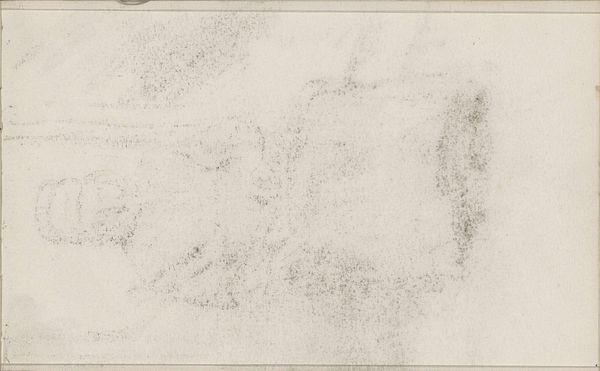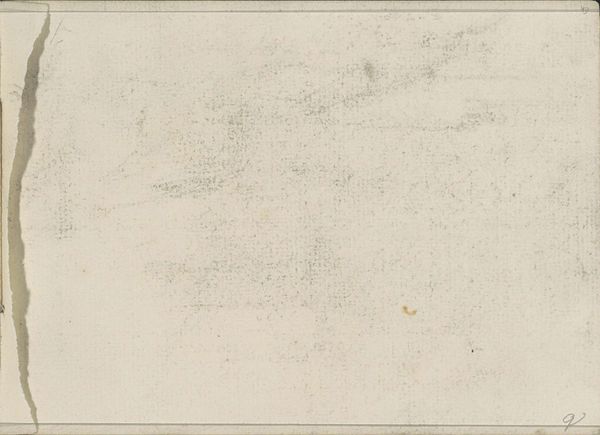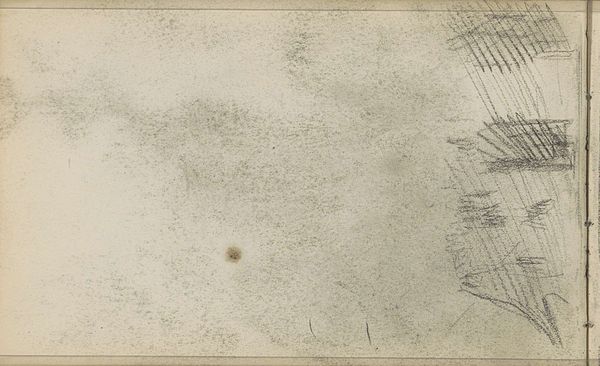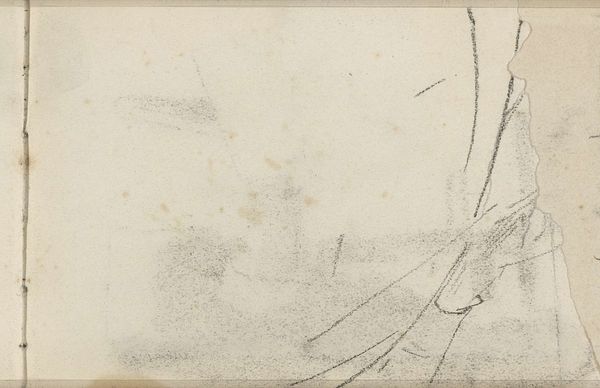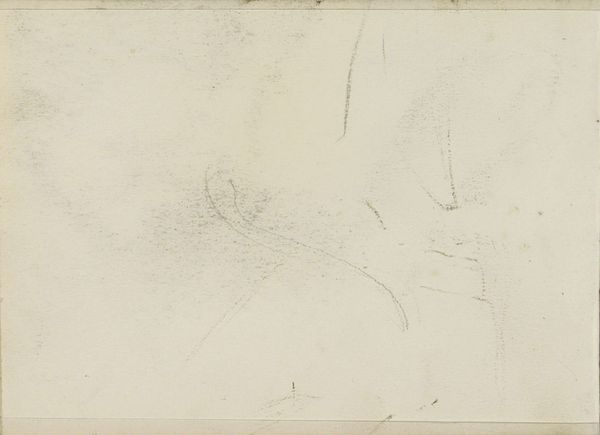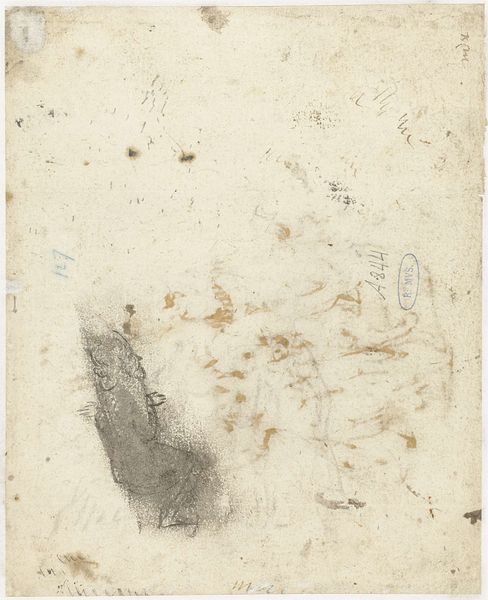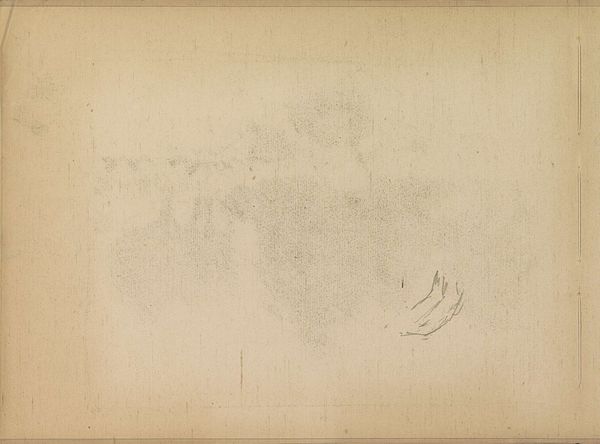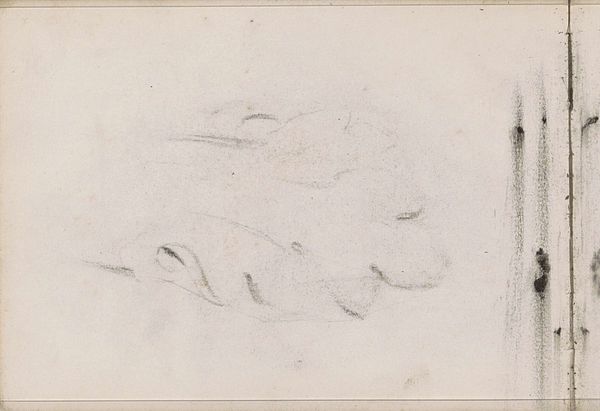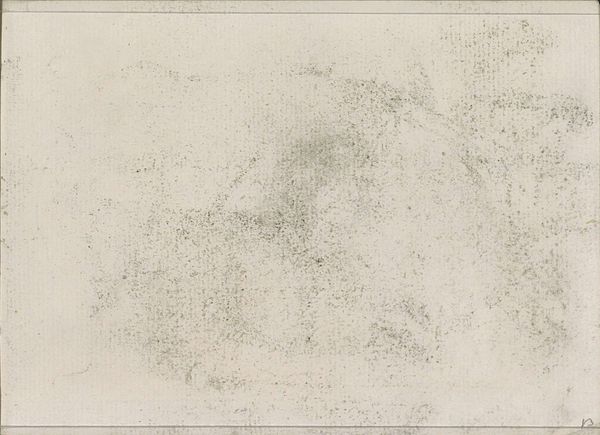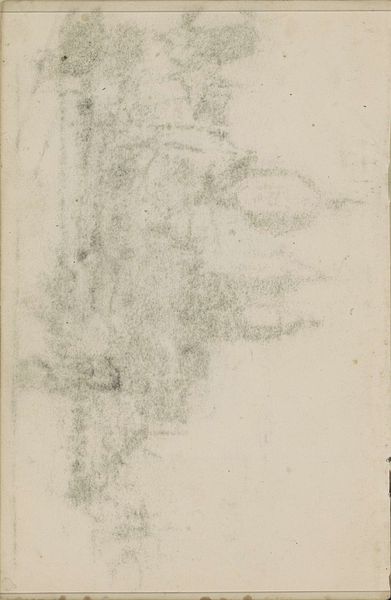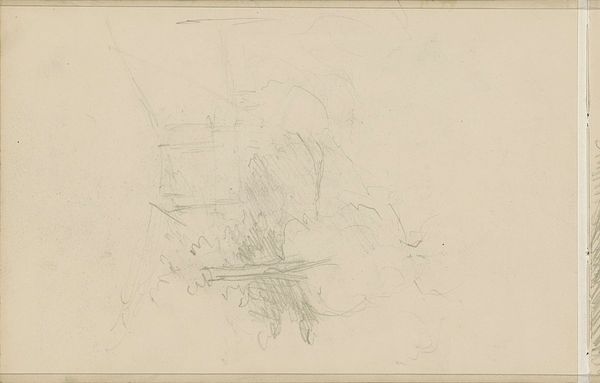
Copyright: Rijks Museum: Open Domain
Editor: Here we have Isaac Israels' "Studie," a pencil drawing on paper dating from around 1886 to 1903. The drawing is quite faint; it's almost like looking at a ghost. What do you see in terms of its materiality? Curator: Well, first, look at the toned paper itself. This isn't just a neutral ground; it's a deliberate choice affecting how we perceive the pencil marks. Israels is manipulating the support to become part of the artwork itself. The texture of the paper – likely mass-produced, even then – would have impacted how the pencil was laid down. Editor: So, you're saying the *kind* of paper matters? It's not just a passive surface? Curator: Exactly! Think about the economic factors involved in choosing that paper. Was it readily available? Affordable? Those choices influence the artistic process as much as the artist's skill. And the pencil itself – a humble tool, easily accessible. There's no precious paint or expensive canvas here. Israels is exploring form with incredibly simple means. What kind of labor would've been available to create such simple tools? Editor: That makes me wonder, was he consciously rejecting "high art" materials? Curator: Perhaps. Or maybe he was interested in a more direct and immediate form of expression. Either way, it challenges the traditional hierarchy of artistic materials and the labor that provides them. It makes us question what we value in art – the finished product or the process of making. It is indeed "just a sketch," yet a detailed account into the means of production of artworks. How would our reception change if this drawing was done with ink? Editor: I never thought about a pencil drawing having so much to say about materials and society! Curator: Precisely. By focusing on these seemingly simple choices, we uncover deeper layers of meaning and engage with the social and economic context in which the art was made and viewed. I now look differently at pencil drawings. Editor: This was definitely enlightening, now I'll pay extra attention to materiality!
Comments
No comments
Be the first to comment and join the conversation on the ultimate creative platform.

